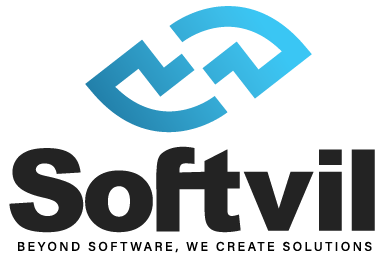In the dynamic landscape of software development, quality assurance (QA) plays a pivotal role in ensuring the success and credibility of software companies in Sri Lanka and around the world. QA encompasses a series of systematic processes that are aimed at detecting issues, preventing failures, and ultimately delivering high-quality software products. As the demand for innovative and reliable software solutions grows, the significance of QA becomes even more pronounced.
At its core, QA is the practice of meticulously scrutinizing every aspect of the software development lifecycle to ensure that the end product meets the highest standards of functionality, performance, and user satisfaction. Software companies in Sri Lanka understand that QA is not just an additional step in the development process; rather, it is an integral part of their commitment to excellence and customer-centricity.
This article delves into the essential role of QA in software development, particularly in the context of software companies in Sri Lanka. We will explore the definition of QA and its multifaceted significance in delivering products that not only meet but exceed customer requirements and expectations. By implementing robust QA practices, Sri Lankan software companies can solidify their position in the competitive global market, gain the trust of their clientele, and pave the way for sustainable growth and success.
Understanding Quality Management System in Software Development

Quality Management System forms the backbone of software development companies in Sri Lanka, ensuring consistent quality in their products and services. It is a comprehensive framework that encompasses various policies, processes, and guidelines to streamline operations and deliver excellence.
Significance of QMS in Ensuring Consistent Quality
QMS is of paramount importance in the software development industry in Sri Lanka. It acts as a guiding framework, directing companies towards a disciplined approach to achieving and maintaining quality throughout the software development lifecycle. By implementing QMS, software companies can establish a culture of continuous improvement, resulting in better customer satisfaction and enhanced business reputation.
ISO 9000 Standards as Guidelines for an Effective QMS
Software companies in Sri Lanka often adopt ISO 9000 standards as a benchmark for developing a robust QMS. ISO 9000 series provides a globally recognized set of guidelines for quality management, covering essential aspects like quality control, quality assurance, and continuous improvement. Adherence to these standards helps Sri Lankan software companies align their practices with international best practices and industry standards.
Components of a QMS
- Mission and Vision: Defining the company’s mission and vision in terms of quality objectives and customer satisfaction.
- Goals: Establishing specific, measurable, achievable, relevant, and time-bound (SMART) quality goals to strive for.
- Policies: Formulating quality policies that outline the company’s commitment to delivering high-quality software solutions.
- Processes: Developing well-defined processes for software development, testing, and quality assurance to ensure consistency and repeatability.
- Resources: Allocating the necessary resources, including skilled personnel and modern tools, to support QMS implementation.
Difference Between QA and QC in Software Companies

In the realm of software development, Quality Assurance (QA) and Quality Control (QC) are two distinct yet complementary approaches that software companies employ to ensure the delivery of high-quality products and services. While QA focuses on prevention and process verification, QC is centered on testing and identifying defects in the final product.
Quality Assurance (QA)
QA is a proactive and systematic approach that emphasizes preventing defects and ensuring that the development process adheres to predefined standards and best practices. The primary goal of QA is to establish robust processes and methodologies that lead to high-quality outputs. QA involves various activities throughout the software development lifecycle, including requirement analysis, design review, process audits, and continuous improvement. By emphasizing prevention, QA aims to minimize the likelihood of defects and issues in the final product.
Quality Control (QC)
QC, on the other hand, is a reactive approach that focuses on testing the final product to identify and address defects and deviations from the specified requirements. It involves various testing techniques such as unit testing, integration testing, system testing, and user acceptance testing. QC aims to verify that the product meets the defined quality standards and performs as expected. If any defects are found during testing, QC teams work to fix and rectify the issues before the product is released to customers.
Complementing Each Other for Product Excellence
While QA and QC have different emphases, they work in tandem to achieve overall product excellence in software companies.
- Preventive vs. Corrective Approach: QA’s preventive measures help reduce the occurrence of defects, minimizing the need for extensive corrective actions during QC testing.
- Continuous Improvement: QA’s focus on process verification and improvement provides valuable feedback to enhance QC testing and identify areas of improvement.
- Iterative Development: The iterative nature of software development allows QA and QC activities to be integrated seamlessly, ensuring that lessons learned from QC are fed back into QA processes.
Examples of Quality Assurance Activities in Software Development

Quality Assurance (QA) activities play a critical role in ensuring the delivery of high-quality software products by software development companies in Sri Lanka. These activities encompass various processes and techniques that aim to establish a culture of excellence and continuous improvement. Here are some key examples of QA activities commonly employed in the industry:
Importance of Documentation in Defining Processes
In the context of software development in Sri Lanka, comprehensive documentation is of utmost importance. This includes defining clear processes, guidelines, and standards for various stages of the software development lifecycle. Properly documented procedures ensure that all team members are on the same page and follow a consistent approach to development. This documentation also serves as a valuable resource for new team members, facilitating a smoother onboarding process.
The Role of Audits in Evaluating Process Effectiveness
Conducting regular audits is a crucial QA activity for software companies in Sri Lanka. Audits involve systematically reviewing and evaluating the effectiveness of the established processes and procedures. By analyzing the outcomes and comparing them to predefined benchmarks, companies can identify areas that require improvement and take corrective actions. Audits help in maintaining a high level of quality by ensuring that the development process is in line with industry best practices and standards.
Code Inspection by Third-Party Testers
Third-party code inspection involves engaging external testers or QA specialists to review the software code. These inspectors, who are not involved in the original development, meticulously analyze the code to identify any potential bugs, vulnerabilities, or performance issues. Their objective perspective allows them to uncover defects that may have been overlooked by the internal development team. Code inspection provides valuable feedback, enabling software companies in Sri Lanka to address and eliminate issues before the software is released to end-users.
Design Inspection to Assess Interface and Functionalities
Design inspection is another vital QA activity, focusing on evaluating the software’s user interface, functionalities, and overall performance. This process involves rigorous testing and scrutiny to ensure that the software meets the specified requirements and aligns with user expectations. By conducting design inspections, software companies in Sri Lanka can enhance the user experience, identify areas for optimization, and deliver products that are intuitive, efficient, and user-friendly.
Types of Testing in Software Quality Assurance

Software Quality Assurance (QA) involves various testing methodologies to ensure that the developed software meets the required standards and performs as expected. These testing types are essential for identifying and resolving defects throughout the software development lifecycle. In the context of software quality assurance, the following types of testing are commonly employed:
Unit Tests
Unit testing focuses on testing individual modules or components of the software in isolation. It aims to ensure that each unit performs as intended and meets its specified requirements. By conducting unit tests, software companies can identify and fix defects in the early stages of development, leading to more reliable and maintainable code.
Integration Tests
Integration testing evaluates the interaction between different modules when integrated into larger components or the entire system. The goal is to verify that the integrated modules cooperate seamlessly and that data flows correctly between them. Integration tests help detect integration issues and ensure the overall stability of the software.
System Tests
System testing involves comprehensive testing of the entire software system, encompassing both functional and non-functional aspects. It aims to validate that the complete system meets all the specified requirements and performs as expected. System tests cover various scenarios and user workflows to assess the overall performance and functionality of the software.
Stress Tests
Stress testing evaluates the software’s performance under extreme conditions, such as heavy traffic, high user loads, or resource limitations. The objective is to identify performance bottlenecks, potential failures, and the system’s ability to handle peak loads. Stress tests ensure that the software remains stable and responsive under challenging circumstances.
Acceptance Tests
Acceptance testing is conducted to ensure that the software meets the client’s specified requirements and aligns with their expectations. It involves validating that all the functionalities and features deliver the desired outcomes as defined in the project’s scope. Acceptance tests play a crucial role in gaining the client’s approval for the final product.
Usability Testing
Usability testing focuses on evaluating the user-friendliness and efficiency of the software from an end-user perspective. Testers simulate real-world scenarios to assess how intuitive and easy-to-use the software is. Usability testing helps software companies identify areas for improvement in the user interface and overall user experience.
Conclusion
In conclusion, the impact of quality assurance on product success in software development, particularly in Sri Lanka, cannot be overstated. By emphasizing the importance of investing in comprehensive quality assurance, software companies in Sri Lanka can significantly enhance their chances of delivering successful products to the market. Robust QA processes play a crucial role in ensuring that software products meet the highest standards of functionality, reliability, and user satisfaction, positioning Sri Lankan companies as competitive players in the global market.

